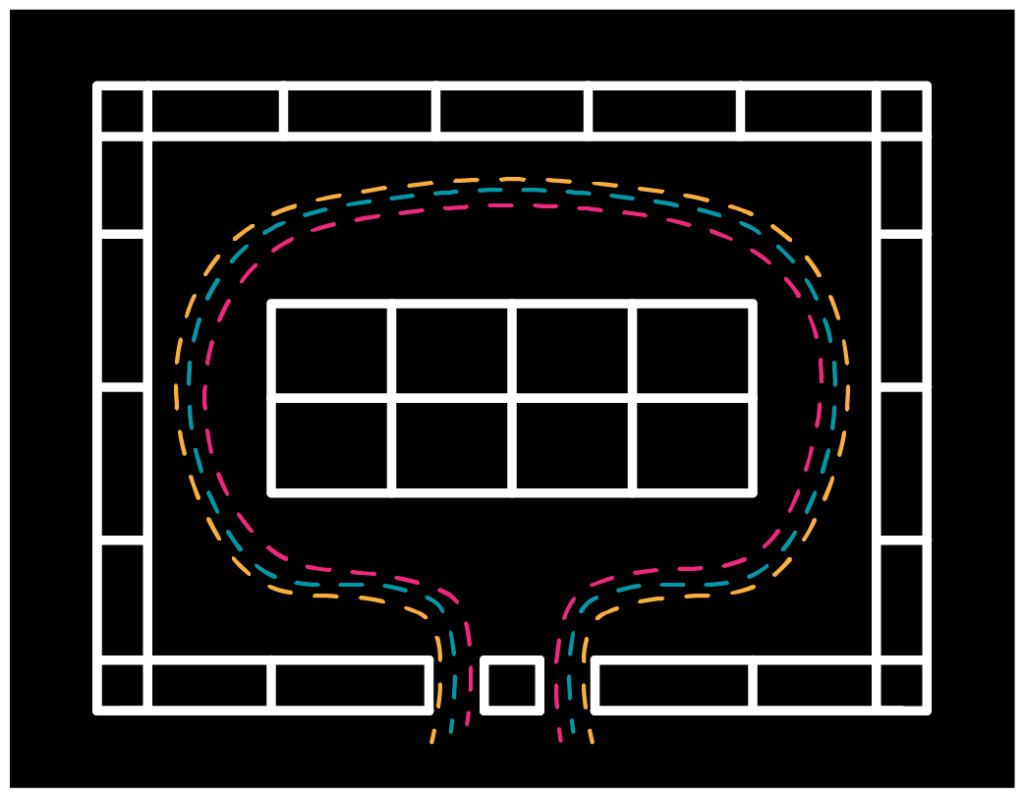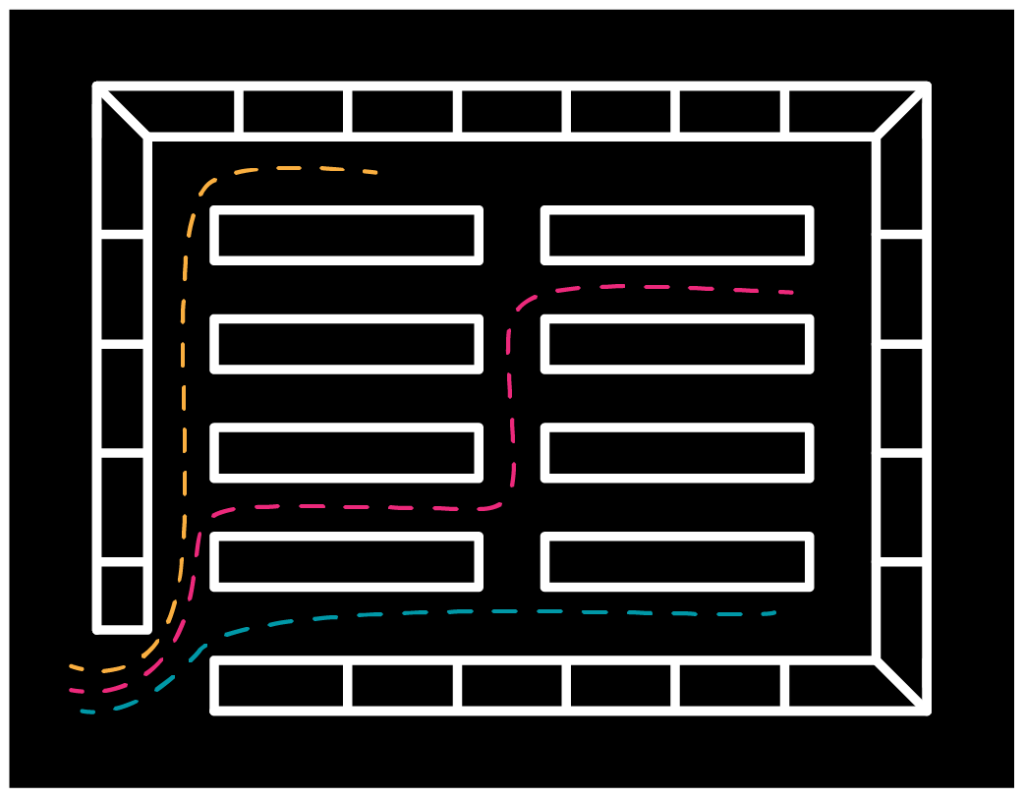Marketing is, in a lot of ways, a form of applied psychology. There are lots of factors that go into a customer’s purchasing decisions. As a small business owner, you can use marketing to guide those decisions in your direction. In this post, we’re going to look at some successful examples of applied marketing that you can utiliz to grow your small business.
The Gruen Effect and its Origins
Viktor Gruen was born in Vienna in 1904. Raised around the bustling town centers of Europe, he saw the benefits that communal spaces could offer to people. Upon moving to the United States, Gruen worked with retailers to drive up sales in the late 1930s, a period marked by pain and financial struggle. He initially designed window displays in New York City and saw success through these designs. The grand displays were attention grabbing and often convinced people to step off of the street and into the store, introducing them to products they could purchase.
Gruen moved west and continued his work in the retail world. He noticed that Americans primarily travelled by car (a notable difference when compared to the foot traffic in his home country). He also noticed they typically moved between two spaces: Home (the first space) and work (the second space). In an effort to create a third space, similar to those town centers he grew up with, he developed a concept for what would later become the shopping mall. He envisioned these spaces as a hub for suburban communities that were a little too spread out for the traditional town square. They would include a wide, open center, shops, child-care facilities, apartments, offices, medical centers, libraries, and—true to form in the 1950s—bomb shelters.
By the time Gruen was asked to actually build one of these, the end result was more focused on shopping and less focused on multi-use purposes. From the 1960s to the 1990s, shopping malls took over America and changed the retail landscape. Gruen eventually realized his vision of a third space wasn’t being carried out the way he had hoped, and he went on to become one of the biggest critics of his own creation.
From both fantastical window displays and shopping malls, the Gruen Effect was born. This effect refers to the shift in mindset customers experience when walking into an intentionally constructed space that leaves them open to making more purchases.
The Gruen Effect Applied
For the purposes of this blog, we’re going to look at two examples of stores that have successfully applied the Gruen effect. The first is often examined in conjunction with this effect, and the second, though more subtle in its application, has a reputation for drawing in customers. We’re talking about IKEA and Target.
IKEA: A Master Class in Experiential Marketing
IKEA has long been lauded as mastering the use of the Gruen effect. From their famous meatballs to their store’s maze-like layout all the way to the actual location of the stores, everything they do is designed to draw customers in and sell them new products.
The Layout
IKEA’s layout is what’s known as a fixed-path layout. If you’ve never been there, imagine a large maze with several furniture displays, followed by another large maze of bins of items. In most retail stores, a customer will only travel through about 30% of the space. IKEA has designed their stores so customers will see most of the space and thousands of products along the way.
The fixed-path layout encourages customers to spend more time in the store, and to look at and interact with more products. They are then introduced to unique, interesting, or fun items and can add them to their giant IKEA shopping bags as they go.

Fixed Path = The most controlled, longest route through a store—allows customers to see and interact with many products

Racetrack = A looser version of the fixed path—can still lead customers through a large portion of the store

Freeform Layout = allows for exploration—can lead customers to spending more time in the store

Grid Layout = the most efficient store layout—allows for quick, convenient trips in and out of the store
The Food Court
Believe it or not, IKEA’s meatballs are one of their best-selling items. They’ve sold so much food in their food courts that they’ve actually been considered one of the major food distributors in the country. And while the meatballs can generate good profits on their own, they also help IKEA sell more furniture and home accessories.
The scent of food has been known to entice customers and make them happier. It also allows customers to spend more time in the store by meeting a basic need. It creates a comforting environment and gives shoppers time to mull over purchasing decisions.
The Bulla Bulla Section
After moving through the maze of product displays, you’ll enter the maze of bins. This area is utilizing something known as bulla bulla and is one of the areas shoppers are most likely to pick up impulse purchases. The bulla bulla section is designed to show a variety of products in large quantities so shoppers believe the items are cheaper. This section is also frequently changed, adding a sense of thrill when a customer finds a new item there.
The Location
IKEAs are all located near populated areas, but they’re just far enough away to be a little inconvenient. When shoppers decide to go there, sunk cost can come into play. It’s an investment of time (and gas) to drive to the store. It’s another investment of time to mull through the fixed path layout. Chances are, if a customer has made it that far, they’re going to want to buy something to make the trip feel worth it.
Target: Leveraging the Power of Positioning
Moving on from IKEA, let’s take a look at Target’s in-store marketing tactics. While Target is less analyzed than IKEA for the use of the Gruen effect, it’s still known for encouraging impulse purchases and many frequent shoppers will tell you they often spend more money there than they thought they would. So, what is Target doing that other, similarly priced stores (like Wal-Mart) aren’t doing?
The Layout
While the layout of Target is more like the grid layout pictured above, there’s still a general fixed path element. The widest path winds around the whole store, while the grid paths are a little narrower, encouraging the foot traffic to follow the looser fixed path.
Another thing to note with Target’s layout is their purposeful placement of necessities. Just like a grocery store placing milk in the section furthest from the front door, Target places seasonal items like back-to-school supplies and holiday decorations in the back corner. This leads shoppers to view more of the store than they might otherwise see.
The Aisles & The Lighting
While there is a wider aisle providing the loose fixed path, all of the aisles in Target are wider than what you might find in similarly priced stores. Target also implements brighter, warmer lighting throughout the store. These two elements combine to make a more pleasant atmosphere. Shoppers feel free to spend more time in the store because it’s an enjoyable experience.
The Organization
While there are certainly times when aisles get disheveled, for the most part, Target keeps their aisles neat and organized. There have been studies done that show clutter leads to stress. And while there may be a form of bulla bulla marketing at play in stores that purposefully allow clutter, Target avoids it. This pairs well with the aisle size and warm lighting, encouraging shoppers to spend more time in the store.
The Brand Deals
The final thing Target does really well is partner with big name celebrities. Chip & Joanna Gaines, Lily Pulitzer, Rifle Paper Co. and other well-known brands have all partnered with Target for either permanent or pop-up collections. These famous names position Target as a sort of luxury store, while their prices actually don’t differ much from retailers like Wal-Mart. This all works together, much like IKEA’s tactics, to create a specific shopping experience that customers want to replicate over and over.
How can these tactics help a small business?
If you’re a small business with a storefront, you can take notes from the big stores. Successful retailers like IKEA and Target show some great ways to apply the Gruen effect and encourage shoppers to spend more time (and more money) in stores. Be mindful of the needs of your customers if you choose to apply some of these tactics. Part of marketing includes building a good relationship with your customers, so you should prioritize responsibility over making a quick buck.
Call Bold River Marketing for help with your small business.
When you work with Bold River Marketing, you can market like the big stores and pay like a small business. We’re a small business too, so we understand the demands you’re facing. Let us take the burden of marketing off of your shoulders so you can focus on growing your small business. Call us today to get started.

